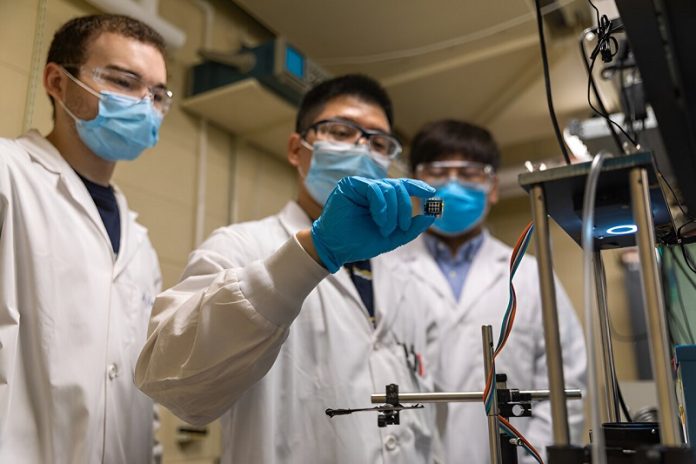
Solar power is changing fast, and a team from Northwestern University has made a huge discovery.
They’ve created a new kind of solar cell that’s really efficient at turning sunlight into electricity.
This new cell has set a record, reaching an efficiency of 25.1%, which is better than the previous best of 24.09%.
Solar cells work by converting sunlight into electricity. Most of the solar cells we use today are made from a material called silicon, but these new cells use a different material called perovskite.
Perovskite is special because you can change its size and what it’s made of to make it absorb different kinds of light. This could mean cheaper and more efficient solar cells in the future.
The big problem with perovskite cells has been that they weren’t as efficient or stable as silicon ones.
But the Northwestern team, led by Professor Ted Sargent, has found a way to make them much better.
The Secret Ingredients
The team’s success comes from using two special molecules in the cells. When sunlight hits the solar cell, it creates tiny particles called electrons.
These electrons are what create electricity. But in perovskite cells, these electrons can get lost or “recombine” before they can be used to make electricity.
To solve this, the team used one molecule to fix issues on the surface of the cell, where electrons can get trapped.
The other molecule was used to stop electrons from recombining in the layers of the cell. By using these two molecules together, the team managed to keep more electrons moving and increase the cell’s efficiency.
More Than Just One Breakthrough
This isn’t the first time Professor Sargent’s team has made progress with perovskite solar cells. They’ve been working on making them better for a while.
In a previous study, they developed a special coating that helps the cells work better in higher temperatures for longer periods. This new discovery can be combined with their earlier work to make even better solar cells.
The team believes their work will inspire others in the scientific community to keep improving solar technology.
They’re not stopping here, though. They plan to keep experimenting with different molecules to tackle more problems with perovskite cells. Their goal is to make solar cells that are not only efficient but also stable and reliable.
This breakthrough could lead to cheaper, more efficient solar panels that are easier to make. It’s a big step forward in the journey to use the sun’s power to meet our energy needs.



